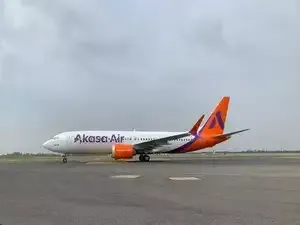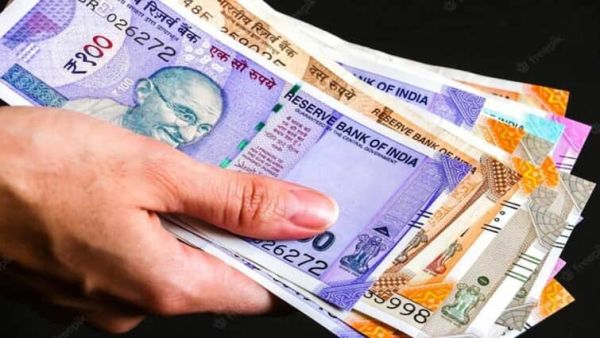Akasa Air says that it is seeing a steady rise in aircraft deliveries from Boeing as the US aerospace major starts ramping up delivery.
The airline expects available seat kilometers - a measure of passenger-carrying capacity - to increase by more than 30% this fiscal year, on top of 50% growth the year before, Chief Financial officer Ankur Goel said on Tuesday.
The airline, backed by the family of late investor Rakesh Jhunjhunwala, managed to improve unit level cost and revenue, but saw its losses increasing to over Rs 1,900 crore in FY 25 as compared to Rs 1,670 crore in previous fiscal. IndiGo, India’s largest airline, posted a net profit of ₹7,258 crore in FY25
Goel didn’t confirm the quantum of losses but said that he is optimistic that with increase in capacity, the airline will soon be operationally profitable as a mismatch in demand and supply will allow airlines to price higher.
"Indian airline's fleet addition is currently growing at a pace of 6 percent on year while demand is growing by around 15 percent on year, leaving behind a demand-supply mismatch," Goel said.
In FY 25, he said, Akasa’s Cost per Available Seat Kilometer (CASK) - a key metric measuring the cost of flying one seat for one kilometer – reduced by 7 % while the airline's unit revenue (Revenue per Available Seat Kilometer) increased by 13%.
“As the airline grows in size, its growth in unit margin will outpace the cost growth, making it profitable, “Goel said.
Since starting business in August 2022, Akasa Air has already cornered a market share of 5%, higher than SpiceJet, while adding almost 25 aircraft in less than two years. But, growth has been stunted as Boeing's aircraft production slowed dramatically in the face of increased scrutiny from regulators, airlines and lawmakers following an incident when a door plug blew off an aircraft in mid-air. Since February, Akasa has added eight planes. Slow growth leads to higher unit cost as airlines tend to enjoy better economics as costs gets spread over a higher volume.
Goel is confident to grow fleet 25-30% every year till 2032. The airline plans to operate a fleet of 226 aircraft by 2032 as it targets a compound annual growth rate of 25-30% in capacity over the next seven years.
The airline is also expanding in international markets and has 16% of its capacity on international routes.
The airline expects available seat kilometers - a measure of passenger-carrying capacity - to increase by more than 30% this fiscal year, on top of 50% growth the year before, Chief Financial officer Ankur Goel said on Tuesday.
The airline, backed by the family of late investor Rakesh Jhunjhunwala, managed to improve unit level cost and revenue, but saw its losses increasing to over Rs 1,900 crore in FY 25 as compared to Rs 1,670 crore in previous fiscal. IndiGo, India’s largest airline, posted a net profit of ₹7,258 crore in FY25
Goel didn’t confirm the quantum of losses but said that he is optimistic that with increase in capacity, the airline will soon be operationally profitable as a mismatch in demand and supply will allow airlines to price higher.
"Indian airline's fleet addition is currently growing at a pace of 6 percent on year while demand is growing by around 15 percent on year, leaving behind a demand-supply mismatch," Goel said.
In FY 25, he said, Akasa’s Cost per Available Seat Kilometer (CASK) - a key metric measuring the cost of flying one seat for one kilometer – reduced by 7 % while the airline's unit revenue (Revenue per Available Seat Kilometer) increased by 13%.
“As the airline grows in size, its growth in unit margin will outpace the cost growth, making it profitable, “Goel said.
Since starting business in August 2022, Akasa Air has already cornered a market share of 5%, higher than SpiceJet, while adding almost 25 aircraft in less than two years. But, growth has been stunted as Boeing's aircraft production slowed dramatically in the face of increased scrutiny from regulators, airlines and lawmakers following an incident when a door plug blew off an aircraft in mid-air. Since February, Akasa has added eight planes. Slow growth leads to higher unit cost as airlines tend to enjoy better economics as costs gets spread over a higher volume.
Goel is confident to grow fleet 25-30% every year till 2032. The airline plans to operate a fleet of 226 aircraft by 2032 as it targets a compound annual growth rate of 25-30% in capacity over the next seven years.
The airline is also expanding in international markets and has 16% of its capacity on international routes.





